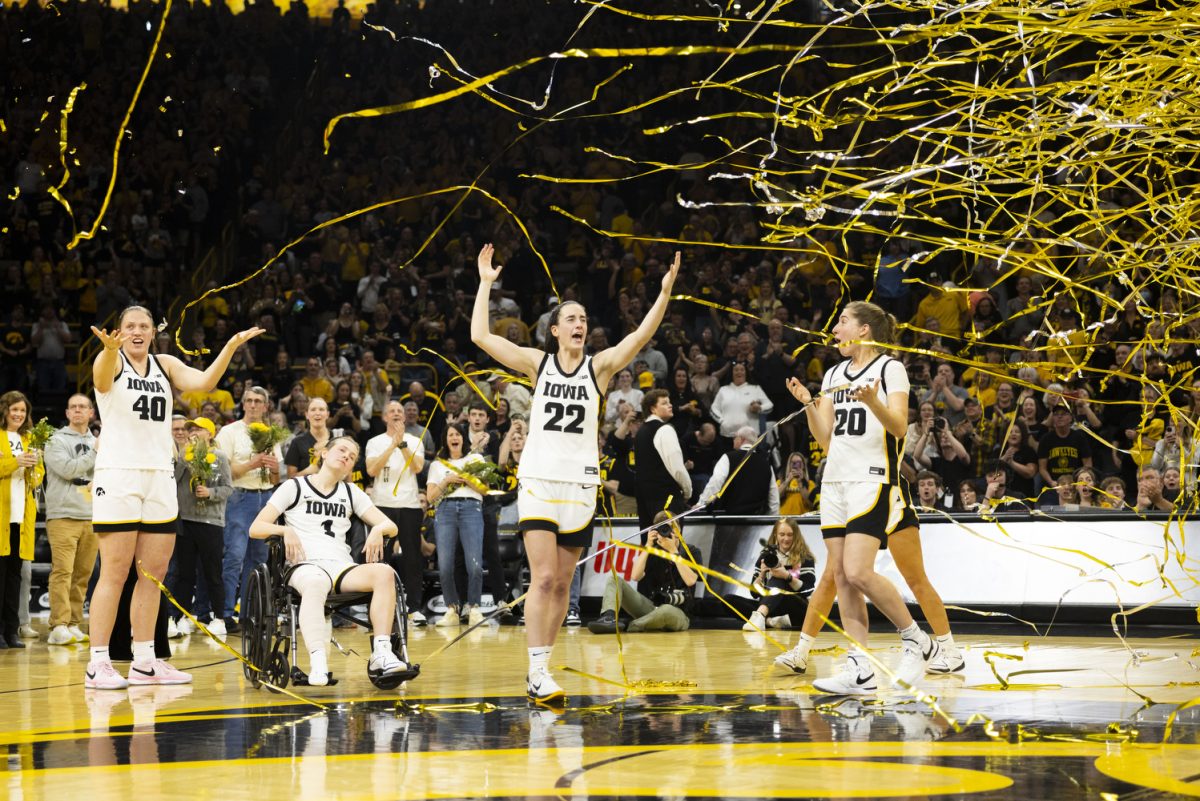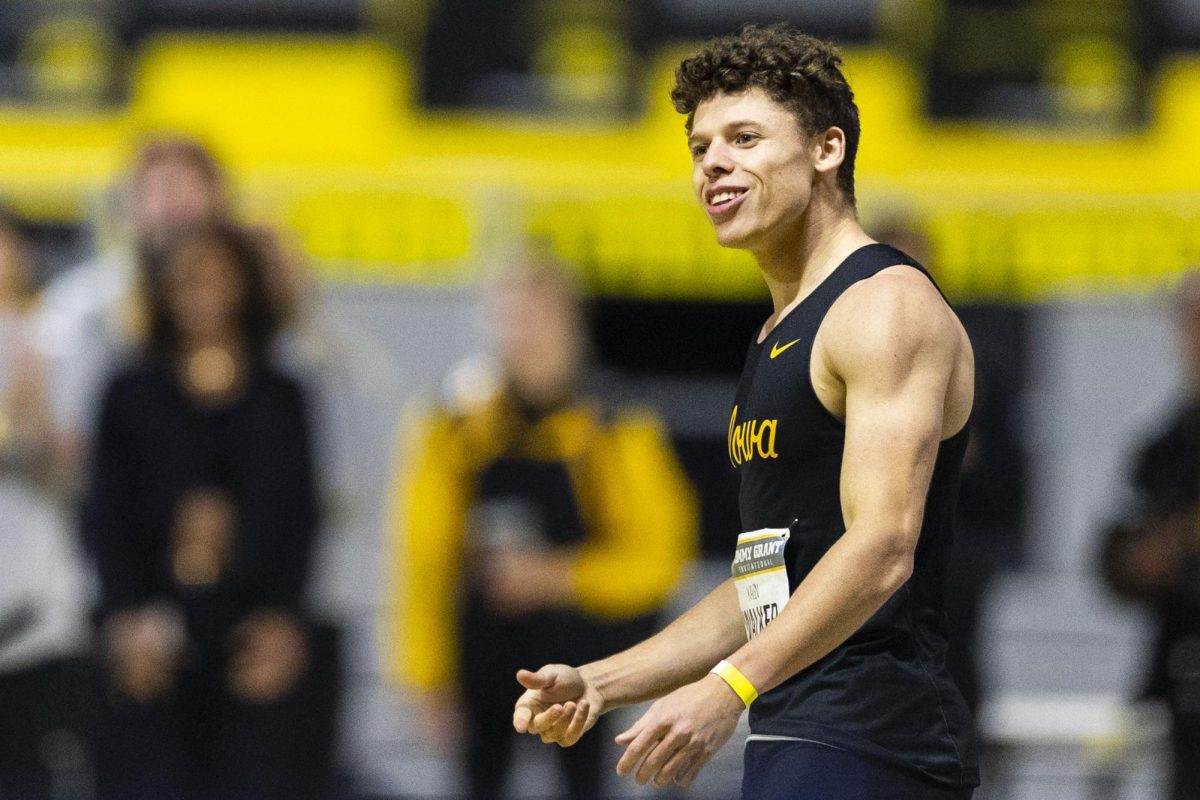When freshman swimmers come into the Iowa swimming program, many never had weight training in high school, so there is an adjustment period when they work with strength and conditioning coach Bill Maxwell.
Maxwell, who is in his 14th year at Iowa, oversees weight training duties for the men’s and women’s swimming and diving teams, rowing, men’s tennis, as well as the men’s gymnastics and spirit squad.
Many swimming programs around the country don’t use a strength and conditioning program, which puts the Hawkeye swimmers at an advantage.
The lifts and sprints the men’s and women’s squads do are designed to build stronger and more explosive bodies and cores. Most short-course swimming pools are 25 yards, so there are many turns involved.
“You’ll be able to save some time on those turns and not to mention you’ll be conditioning your body — building a leaner, stronger engine propelling your body through the water,” Maxwell said. “We spend a lot of time focusing on their posture and streamline position, which is trying to create as straight of a line as possible with their bodies.”
Incoming freshmen should expect some learning curves while training under Maxwell. For their first four weeks in the program, they are separated from the upperclassmen and spend the majority of the time being taught the exercise motions and techniques.
“[Coach Maxwell] eased us into [the program when I was a freshman],” sophomore Jordan Huff said. “The part I struggled in was technique because [he] demands perfect technique.”
Maxwell said his program for his swimmers takes a one-year change to reach the full effects for freshman swimmers.
He monitors the younger swimmers to make sure they can handle a rigorous conditioning program combined with swimming practice and an academic courseload.
Freshman Tyler Lentz said he has already noticed a difference from the conditioning and has “felt a lot stronger … it has also helped out a lot for my ability.”
The program for the swimming team varies during the year depending on what part of the competitive season it is. For instance, during the championship season — which is fast approaching for the Hawkeyes — Maxwell will taper the work down and decrease the volume of workouts while still maintaining a high intensity on the speed and weight parts.
“The volume that they work will be drastically less,” Maxwell said. “We’re trying to get them to peak right for their Big Ten championship meets.”
After the competitive season ends in late March or early April, the swimmers are given two weeks off before off-season training begins. During the off-season, the men’s and women’s teams will go to Kinnick Stadium for their dry-land training.
Dry-land training is important because the athlete is able to get a better stimulus response due to fighting gravity instead of being in the water. This training is focused on becoming more explosive athletes.
If the swimmers are as fast as possible in their sprint workouts, then their overall work will build their conditioning level, according to Maxwell.
The squads are fortunate to have the Campus Recreation & Wellness Center this year where their weight training equipment is right next to the pool. When the team housed in the Field House, the men lifted in an empty racquetball court and office.
Junior Paul Gordon remembers that the old facilities were adequate, but nothing special.
“We felt scrappier, a ‘Rocky Balboa’ feeling, and we did a lot of medicine ball stuff without using machines,” Gordon said. “It’s so much better to be in a great facility. I’ve seen big improvements in my stability when I’m in the water and that’s completely because of the lifts and exercises we do.”






